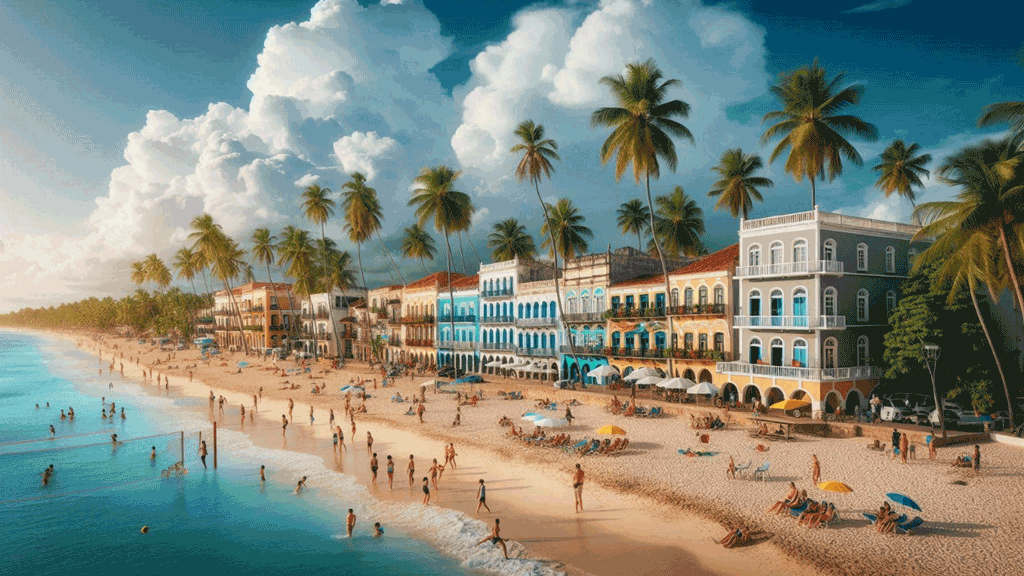Hidden vacation spots in Virginia: Explore eight serene parks, charming towns, and unique destinations for your next adventure in the Old Dominion.

How Virginia Got Its Name
Virginia was named in honor of Queen Elizabeth I of England, famously known as the “Virgin Queen” due to her status as an unmarried woman. Sir Walter Raleigh chose “Virginia” in 1584 when he received Queen Elizabeth’s charter to establish a New World colony. The name symbolized the virgin land the English had yet to explore and settle.
How Virginia Was Founded
The founding of Virginia is a tale of perseverance and survival. In 1607, 104 English settlers, led by Captain John Smith and backed by the Virginia Company, arrived in North America and established Jamestown, named after King James. This settlement marked the first permanent English colony in the New World. The early years were fraught with challenges, including harsh winters, famine, and conflicts with the indigenous Powhatan tribes. Despite these hardships, the colony managed to survive, thanks in part to the cultivation of tobacco, which became a profitable export.
How Virginia Got Its Shape
Virginia’s boundaries have evolved significantly since its founding. Initially, Virginia was a vast territory that included parts of what are now several other states. Determining its shape involved a series of land grants, treaties, and political decisions. For instance, the Potomac River became a significant boundary, and the Mason-Dixon Line delineated the northern boundary4. Over time, Virginia’s shape was influenced by geographic features such as the Blue Ridge Mountains and the Chesapeake Bay.
How Virginia Became a State
Virginia played a pivotal role in the American Revolution and the formation of the United States. 1776, Virginia declared its independence from Great Britain, and its leaders were instrumental in drafting the Declaration of Independence. On June 25, 1788, Virginia ratified the United States Constitution, becoming the tenth state to join the Union. This marked a significant milestone in the state’s history, transitioning from a British colony to a newly formed United States member.

Vacation Spots in Virginia
Virginia offers a diverse range of vacation spots that cater to various interests. Here are some must-visit destinations:
Shenandoah National Park: This park is a haven for nature lovers, known for its stunning fall foliage, hiking trails, and scenic Skyline Drive.
Colonial Williamsburg: Step back in time and experience life in the 18th century at this living history museum.
Virginia Beach: Enjoy the sun, sand, and surf at this popular beach destination, boasting a vibrant boardwalk and numerous cultural attractions.
Alexandria: This historic waterfront city offers charming cobblestone streets, boutique shops, and a rich history.
Richmond: The state’s capital is a museum lover’s paradise, with attractions like the Virginia Museum of Fine Arts and the American Civil War Museum.
Busch Gardens: This European-themed amusement park in Williamsburg is perfect for families seeking fun and adventure.
Arlington National Cemetery: Pay your respects at this military memorial site, the final resting place for many American heroes.
Luray Caverns: Explore the underground wonderland of these stunning limestone caves.
Mount Vernon: Visit George Washington’s estate and learn about the life of the first U.S. president.
Assateague Island: Witness the wild ponies and enjoy the natural beauty of this unique island.
Virginia’s rich history, diverse landscapes, and vibrant culture make it an ideal destination for travelers of all interests. Whether you’re a history buff, nature enthusiast, or beach lover, Virginia has something to offer
What are some lesser-known vacation spots in Virginia?
Virginia is full of hidden gems that offer unique experiences away from the usual tourist trails. Here are some lesser-known vacation spots you might enjoy:
Dismal Swamp State Park: Nestled near Chesapeake, this serene park is perfect for outdoor enthusiasts. It offers over 22 miles of trails for hiking and biking, and the tranquil Lake Drummond is ideal for fishing and boating.
The Retreat at Crabtree Falls: Located in Tyro, this peaceful retreat offers a chance to reconnect with nature. The area is known for its beautiful waterfalls and scenic hiking trails.
Shenandoah Crossing: This resort offers a rustic yet elegant experience in Gordonsville. With activities like horseback riding, fishing, and boating, it’s an excellent spot for families.
Mariners Landing: Tucked away in the Blue Ridge Mountains alongside Smith Mountain Lake, this resort community offers stunning landscapes and various outdoor activities.
Colonial Beach: A quaint riverside resort town between the Potomac River and Monroe Bay. It’s a boater’s paradise and offers sandy beaches and marinas.
Onancock: Known as the “Gem of the Eastern Shore,” this small town offers waterfront excursions, award-winning restaurants, and a diverse arts scene. You can also catch a ferry to nearby Tangier Island.
Yorktown Beach: This beach offers a mix of history and relaxation. It’s perfect for a family outing with museums, shops, and local seafood restaurants.
Fort Monroe: Located at the mouth of the James River, this former military base offers a secluded beachfront and a rich history.
These hidden spots contrast the more crowded tourist destinations and offer unique experiences for every type of traveler.